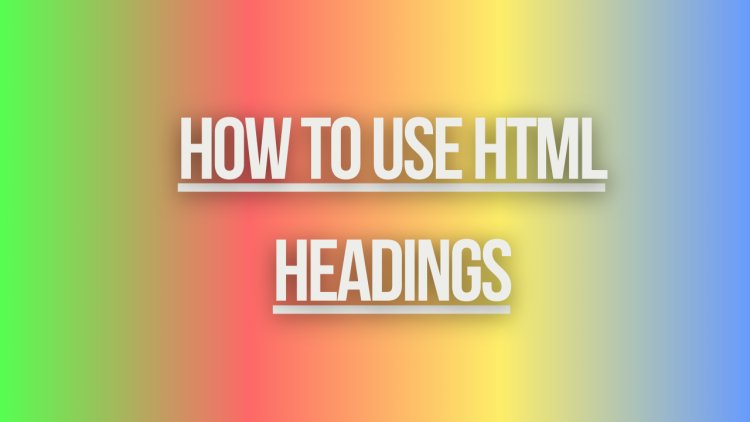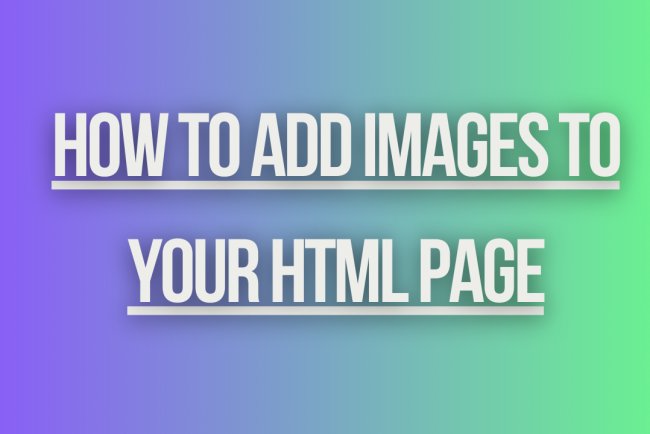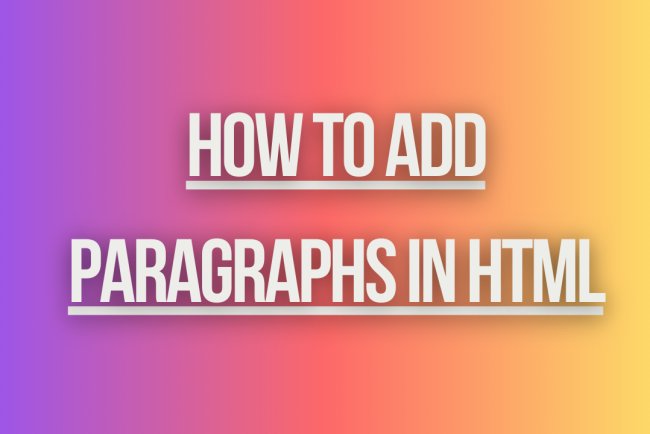How to Use HTML Headings
Learn how to use HTML headings effectively in your web pages. Understand the different heading tags and their importance for SEO and accessibility.

Using HTML headings is straightforward and essential for structuring your web content. Headings are used to define the hierarchy and structure of your document. Here’s a detailed guide on how to use HTML headings:
What are HTML Headings?
HTML headings are defined with the <h1> to <h6> tags. <h1> defines the most important heading, while <h6> defines the least important heading.
Steps to Use HTML Headings
-
Basic Syntax:
- Each heading tag is a block-level element, which means it starts on a new line and takes up the full width available.
- The text inside the heading tags is usually bold and larger than the normal text.
<html> <head> <title>HTML Headings</title> </head> <body> <h1>This is a level 1 heading</h1> <h2>This is a level 2 heading</h2> <h3>This is a level 3 heading</h3> <h4>This is a level 4 heading</h4> <h5>This is a level 5 heading</h5> <h6>This is a level 6 heading</h6> </body> </html> -
Hierarchy and Structure:
- Use
<h1>for the main title or most important heading. - Use subsequent heading levels (
<h2>,<h3>, etc.) to denote subsections and their importance within the document. - Ensure that you maintain a logical order and do not skip heading levels for a coherent structure.
<html> <head> <title>Document Structure Example</title> </head> <body> <h1>Main Title</h1> <p>Introduction text...</p> <h2>Section Title</h2> <p>Details about the section...</p> <h3>Subsection Title</h3> <p>Details about the subsection...</p> <h2>Another Section Title</h2> <p>More details...</p> </body> </html> - Use
-
Styling Headings with CSS:
- You can customize the appearance of your headings using CSS.
<html> <head> <title>Styled HTML Headings</title> <style> h1 { color: navy; font-size: 2.5em; text-align: center; } h2 { color: darkgreen; font-size: 2em; text-align: left; } h3 { color: maroon; font-size: 1.5em; text-align: left; } </style> </head> <body> <h1>Main Heading</h1> <h2>Secondary Heading</h2> <h3>Subheading</h3> </body> </html> -
SEO Best Practices:
- Search engines use headings to index the structure and content of your web pages.
- Proper use of headings helps with SEO by making it easier for search engines to understand the main topics of your page.
- Avoid overusing
<h1>tags; ideally, there should be only one<h1>per page.
-
Accessibility:
- Proper use of headings improves accessibility for users using screen readers, providing a better navigation experience.
- Screen readers often provide shortcuts to navigate between headings, so maintaining a logical structure is important.
Example of a Complete Document
<html>
<head>
<title>Complete Example with HTML Headings</title>
<style>
body {
font-family: Arial, sans-serif;
}
h1 {
color: #333;
}
h2 {
color: #555;
}
h3 {
color: #777;
}
</style>
</head>
<body>
<h1>Welcome to My Website</h1>
<p>This is the main content of the website.</p>
<h2>About Us</h2>
<p>Information about our company.</p>
<h3>Our Mission</h3>
<p>Details about our mission.</p>
<h2>Services</h2>
<p>Details about the services we offer.</p>
<h3>Web Development</h3>
<p>Details about our web development services.</p>
<h3>SEO Optimization</h3>
<p>Details about our SEO services.</p>
<h2>Contact</h2>
<p>How to get in touch with us.</p>
</body>
</html>
By following these steps, you can effectively use HTML headings to structure your web content, enhance readability, and improve SEO and accessibility.
What's Your Reaction?
















